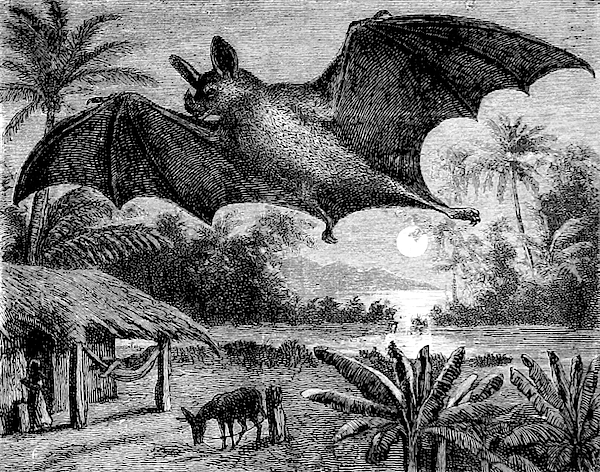Use code RJTJFG for 20% off at checkout. Until 5/31/20


Boundary: Bleed area may not be visible.


by British Library
$54.00
This product is currently out of stock.
Size
Orientation
Image Size
Product Details
You'll never run out of power again! If the battery on your smartphone or tablet is running low... no problem. Just plug your device into the USB port on the top of this portable battery charger, and then continue to use your device while it gets recharged.
With a recharge capacity of 5200 mAh, this charger will give you 1.5 full recharges of your smartphone or recharge your tablet to 50% capacity.
When the battery charger runs out of power, just plug it into the wall using the supplied cable (included), and it will recharge itself for your next use.
Design Details
Vampire bats are bats whose food source is blood, a dietary trait called hematophagy. Three bat species feed solely on blood the common vampire bat... more
Dimensions
1.80" W x 3.875" H x 0.90" D
Ships Within
1 - 2 business days

Photograph

Canvas Print

Framed Print

Art Print

Poster

Metal Print

Acrylic Print

Wood Print

Greeting Card

iPhone Case

Throw Pillow

Duvet Cover

Shower Curtain

Tote Bag

Round Beach Towel

Zip Pouch

Beach Towel

Weekender Tote Bag

Portable Battery Charger

Bath Towel

Apparel

Coffee Mug

Yoga Mat

Spiral Notebook

Fleece Blanket

Tapestry

Jigsaw Puzzle

Sticker
Vampire bats are bats whose food source is blood, a dietary trait called hematophagy. Three bat species feed solely on blood the common vampire bat (Desmodus rotundus), the hairy-legged vampire bat (Diphylla ecaudata), and the white-winged vampire bat (Diaemus youngi). A vampire bat has front teeth that are specialized for cutting and the back teeth are much smaller than in other bats. The inferior colliculus, the part of the bat's brain that processes sound, is well adapted to detecting the regular breathing sounds of sleeping animals that serve as its main food source. While other bats have almost lost the ability to maneuver on land, vampire bats can walk, jump, and even run by using a unique, bounding gait, in which the forelimbs instead of the hindlimbs are recruited for force production, as the wings are much more powerful than the legs. Vampire bats use infrared radiation to locate blood hotspots on their prey. Image taken from page 375 of 'La Terra, trattato popolare di geograf...
$54.00


There are no comments for Vampire Bat, 1898 #1. Click here to post the first comment.